Crankshaft Rear Oil Seal and Housing Replacement Housing
Removal Procedure
- Remove the engine oil pan. Refer to Oil Pan Replacement .
- Remove the transmission assembly.
- Remove the flywheel. Refer to Engine Flywheel Replacement .
- Remove the three screws and the one nut holding the oil seal housing to the engine.
- Remove the oil seal housing.
- Remove the gasket and discard it.
- Clean all sealing surfaces.
- Inspect the housing for warping, cracks, wear, or damage.
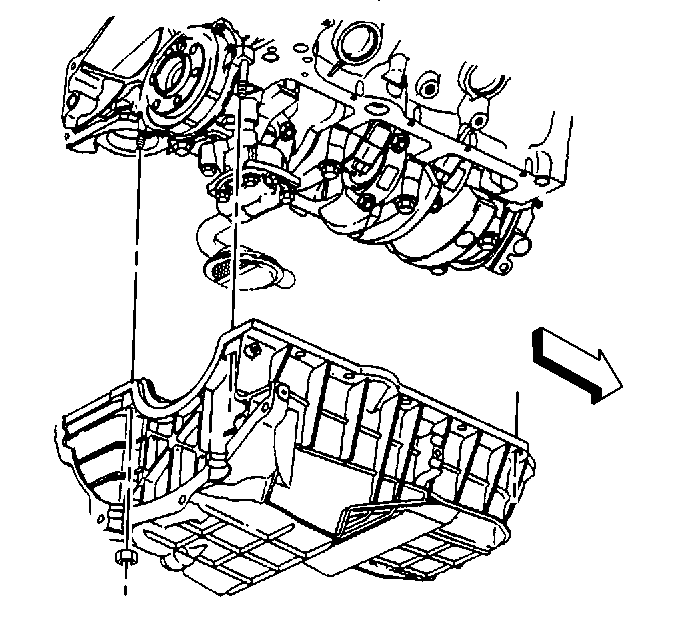
Important: Do not remove the crankshaft rear oil seal housing if only replacing the crankshaft rear oil seal.

| • | Refer to Transmission Replacement in Manual Transmission - New Venture. |
| • | Refer to Transmission Replacement in Automatic Transmission - 4L60-E. |
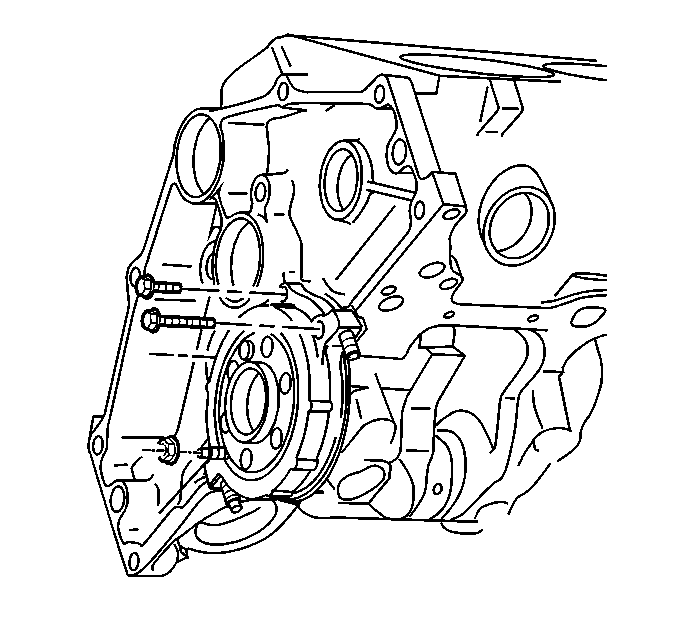
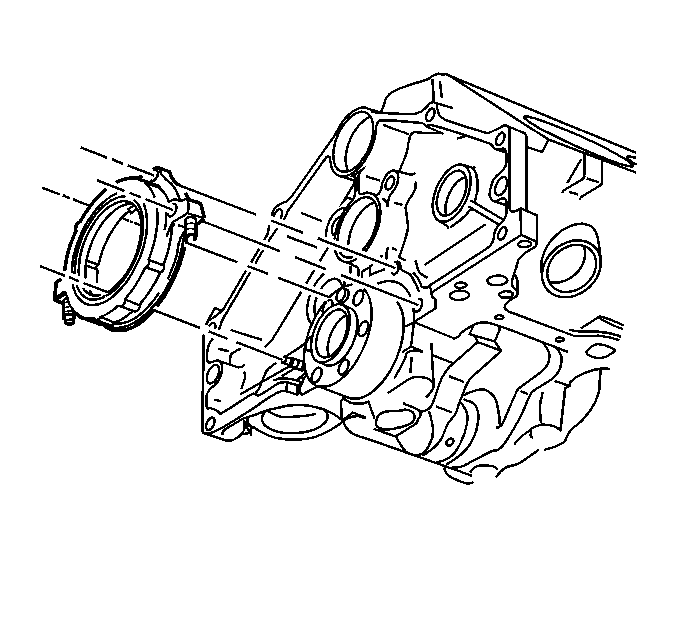
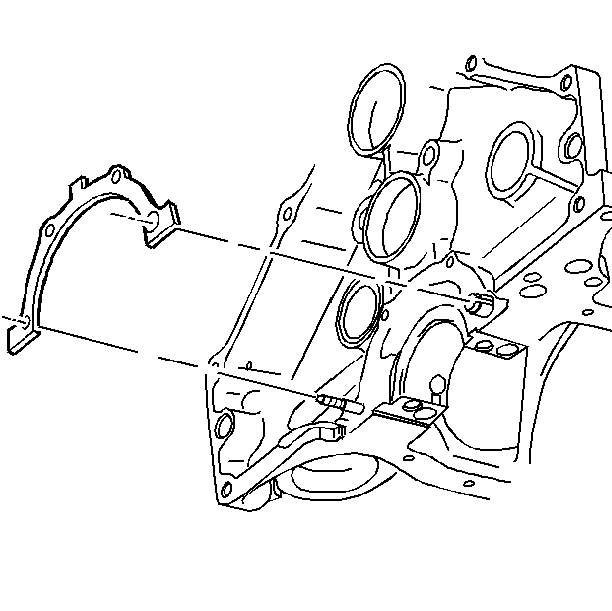
Installation Procedure
- Install a NEW gasket.
- Install the NEW oil seal housing with the oil seal to the engine block using the following procedure.
- Install the three screws and the one nut to the oil seal housing.
- Install the flywheel. Refer to Engine Flywheel Replacement .
- Install the transmission assembly.
- Install the oil pan. Refer to Oil Pan Replacement .


Important: When installing a new oil seal housing the seal will come with the housing. Use the following procedure. Refer to Crankshaft Rear Oil Seal and Housing Replacement (Oil Seal) if reusing the housing.
| Important: Do not oil or grease the seal lip. |
| 2.1. | Leave the sleeve in the seal and use the sleeve as a guide to ease the seal lip over the end of the crankshaft. |
| 2.2. | Push the housing with the seal, fully onto the crankshaft until the housing is against the gasket and the engine. |

Notice: Use the correct fastener in the correct location. Replacement fasteners must be the correct part number for that application. Fasteners requiring replacement or fasteners requiring the use of thread locking compound or sealant are identified in the service procedure. Do not use paints, lubricants, or corrosion inhibitors on fasteners or fastener joint surfaces unless specified. These coatings affect fastener torque and joint clamping force and may damage the fastener. Use the correct tightening sequence and specifications when installing fasteners in order to avoid damage to parts and systems.
Tighten
Tighten the crankshaft rear oil seal housing screws and nut to 12 N·m
(106 lb in).

| • | Refer to Transmission Replacement in Manual Transmission - New Venture. |
| • | Refer to Transmission Replacement in Automatic Transmission - 4L60-E. |

Crankshaft Rear Oil Seal and Housing Replacement Oil Seal
Removal Procedure
- Remove the flywheel and transmission assembly.
- Remove the crankshaft rear oil seal by prying at the arrows, then discard it.

Refer to Transmission Replacement in Transmission/Transaxle.

Refer to Crankshaft Rear Oil Seal and Housing Removal (General) .
Installation Procedure
Tools Required
J 35621-A Crankshaft Rear Oil Seal Installer
- Use the J 35621-A in order to install the NEW oil seal.
- Install the crankshaft rear oil seal using the tool.
- Install the flywheel and transmission assembly.

Refer to Crankshaft Rear Oil Seal and Housing Installation in Engine Mechanical.
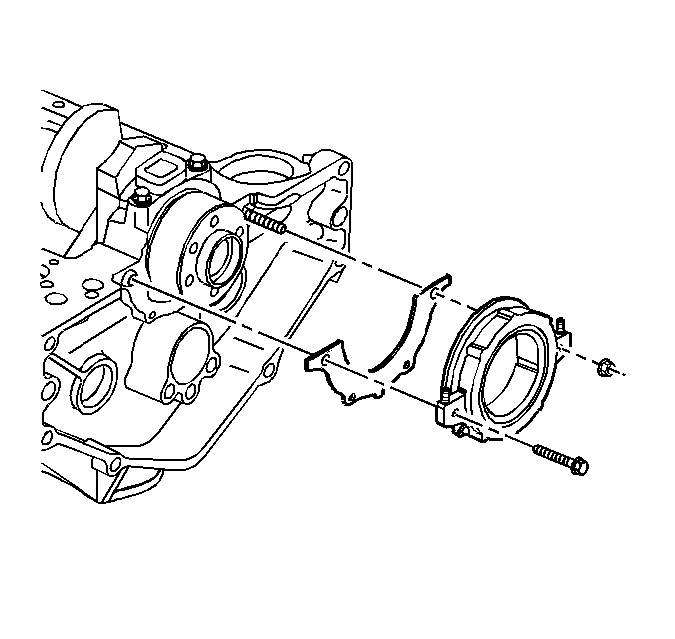
Refer to Crankshaft Rear Oil Seal and Housing Installation .

Refer to Transmission Replacement in Transmission/Transaxle.
